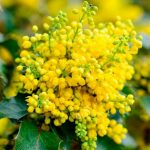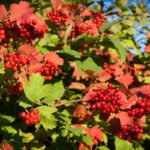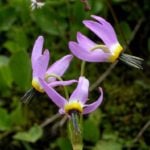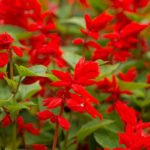Aesculus is a decorative deciduous tree that decorates gardens, squares and parks. Aesculus (unlike sweet chestnut) belongs to the Sapindaceae family.
Beautiful fluffy inflorescences on the background of carved leaves, serve as a worthy decoration of suburban areas of a large area. Why big? – because aesculus is able to grow up to 30 m (98.4 ft) in height and takes up a lot of space. Its powerful root system grows horizontally up to 6 m (19.7 ft) in diameter. So imagine: is such a giant capable of surviving on a modest area of standard 6 acres? Where else do you want to plant flowers and shrubs, cabbage, carrots, radishes and other country “needs”. But for planting chestnut in small areas, it is quite possible to use its decorative varieties, which are shrubs from 1.5 to 5 m (4.9-16.4 ft) high.
Aesculus: growing, planting, caring
The methods of planting and caring for a chestnut are the same as those of a sweet chestnut, so let’s briefly consider the main points.

Seeds-nuts of aesculus, as well as nuts of sweet chestnut, need to be stratified before planting in the garden, i.e. in autumn choose the largest nuts, put them in a wooden box with wet sand and put in a cold place until spring. On the bottom shelf of the refrigerator or in the basement. Before stratification, nuts should be kept for 5-6 days in warm water (the water should be changed periodically), and in early spring the seeds can be planted in the open ground, having buried them 10-12 cm (3.9-4.7 in).
If you want to improve the decorative qualities of aesculus, then 2-year-old seedlings shorten the main taproot by 1/3. In this simple way, you will provide the tree with a complete environment for water supply (as in the case of pruning, the chestnut roots will grow horizontally) and get a more spreading crown than a chestnut from a root that has not been cut before.
In addition, in the spring, you can simply collect the largest nuts under the tree that have overwintered under a layer of fallen leaves, i.e. naturally delaminating, and put them in your favorite place. As a rule, most of the nut seeds planted after natural wintering give healthy, strong shoots. Take care of the Esculus as well as the Sweet Chestnut.
Medicinal properties of Aesculus
After the flowering period (usually in May-June), cute green cocoons covered with long spikes appear on the fan-shaped branches of the esculus. They contain fruits-nuts, which, alas, are inedible for humans, but have excellent medicinal qualities. It should be noted that everything has healing properties: roots, leaves, flowers, bark, nuts and even nutshells. It serves as an excellent raw material for the pharmaceutical industry and is widely used in folk medicine.
Decorative properties of Aesculus
Aesculus deservedly enjoys the attention of landscape designers. After all, its bell-shaped flowers, collected in erect pyramidal inflorescences, framed by large five- to seven-toed leaves, look very decorative. And even after the chestnut fades, it does not lose its expressiveness. In the landscape, it is used in all its forms: columnar, pyramidal or conical crown; with palmate spherical or purple leaves, etc. It is popular in both single and group plantings. And now I present to you the most decorative varieties of aesculus.
Esculus x karnea is a beautiful conical tree with a spreading crown up to 10 m (32.8 ft) high. Its pink flowers, collected in erect inflorescences, favorably shade the dark green leaves. It is resistant to air pollution and is grown for the improvement of parks and gardens in industrial urban areas.

Aesculus carnea Briotii has a spherical crown that can grow up to 8 m (26.2 ft) wide. An adult tree, under favorable conditions, grows up to 15 m (49.2 ft). Small bell-shaped flowers are bright red, collected in large inflorescences up to 20 cm (7.9 in) high. Chestnut Aesculus carnea Briotii is extremely hardy and is one of the most decorative species of chestnut.

Esculus parviflora Walt is a strong-branched shrub up to 5 m (16.4 ft) high. It is known for luxurious snow-white inflorescences with flowers of white stamens with a bright pink “tail” and palmately complex leaves, usually consisting of 5-7 finely toothed oval leaves. Flowering begins in the second half of summer. Thermophilic and rather capricious, prefers soil well moistened with nutrients. In landscape design, it is used both for tamping tall trees and individual decorative plantings.

Many summer residents noticed that after planting on the aesculus plot, not only the surrounding landscape changes, but also the nature of the garden. An elusive elegance, an elusive charm and even a certain respectability appear in it.


















